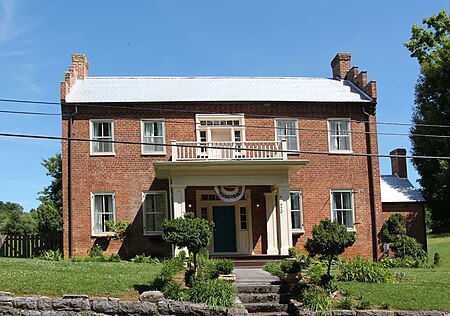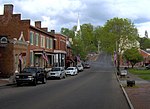Henry Hoss House

The Henry Hoss House is a historic house in Jonesborough, Tennessee, U.S., though not within the Jonesborough Historic District. It was built in 1859-1860 for Dr Joseph S. Rhea and his wife Lady Kirkpatrick. The home served as a residence as well as a clinic; the front rooms on either side of the foyer were the doctor's waiting room and examining room, and the upstairs bedrooms were probably for their children. It was sold to Henry Hoss in the midst of the American Civil War of 1861-1865. Hoss lived here with his wife, née Anna Maria Sevier (grand daughter of John Sevier), and their children. It remained in the Hoss family until 1980.The house was designed in the Federal architectural style. It has been listed on the National Register of Historic Places since December 16, 1982. Jonesborough is an area of Tennessee with more houses (about five) of the Federal style that have stepped gables than any other area of the state. The crow-stepped gabling of the east and west sides makes the Hoss House the only example of a rural Federal style house in Washington County, Tennessee, with stepped gables.
Excerpt from the Wikipedia article Henry Hoss House (License: CC BY-SA 3.0, Authors, Images).Henry Hoss House
Old Boones Creek Road,
Geographical coordinates (GPS) Address Nearby Places Show on map
Geographical coordinates (GPS)
| Latitude | Longitude |
|---|---|
| N 36.305555555556 ° | E -82.463611111111 ° |
Address
Old Boones Creek Road 973
37659
Tennessee, United States
Open on Google Maps





